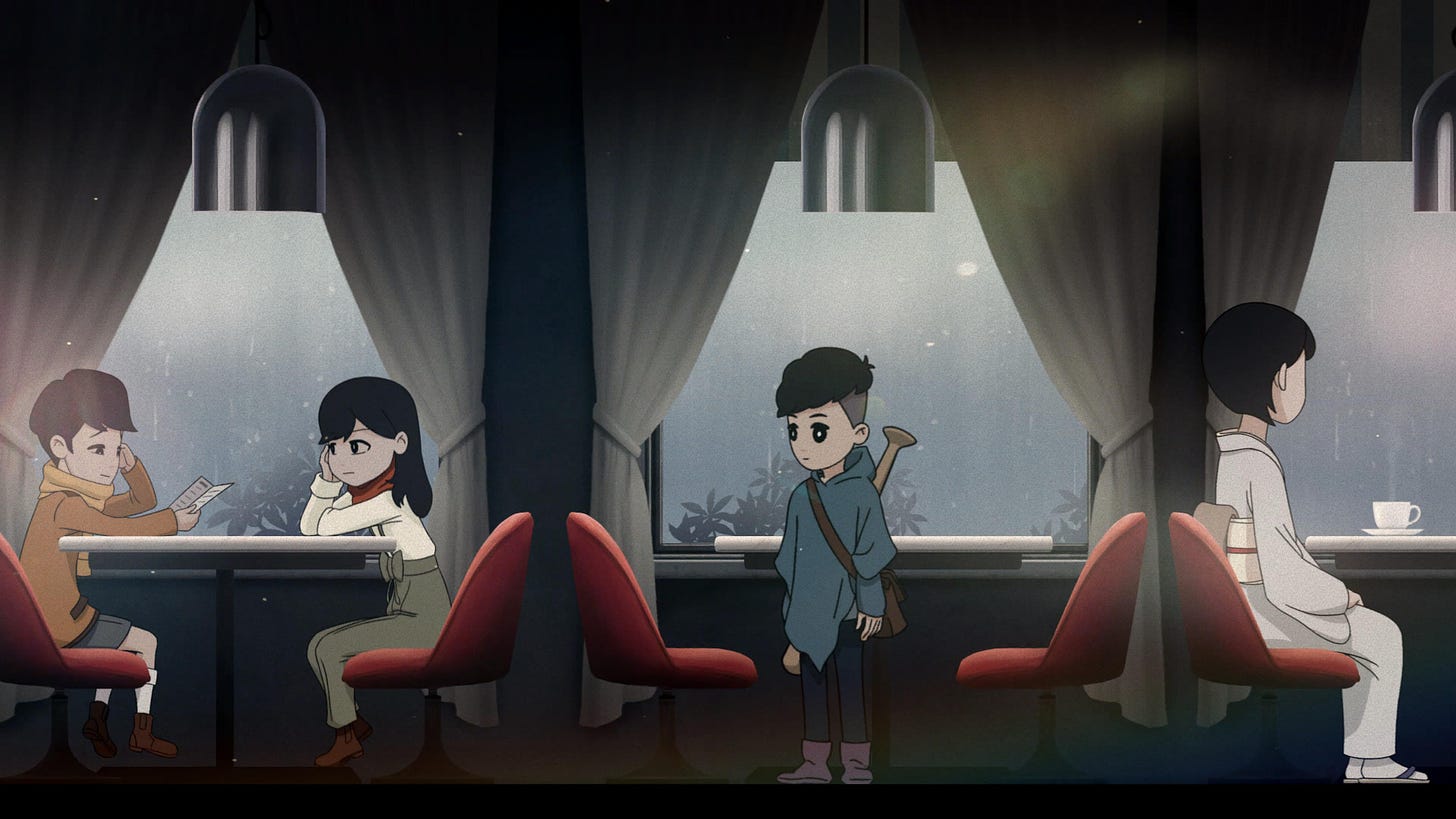Last Time I Saw You is art and gameplay walking hand-in-hand
Maboroshi Artworks' debut is like walking through a painting while a chamber ensemble scores your journey
Review: Last Time I Saw You
Developed by Maboroshi Artworks and published by Chorus Worldwide
Rating: ★★★★★★★★☆☆
There’s a special place on the shelf in my heart for narrative-driven games that seek to explore very common concepts in the most uncommon and extraordinary manner. I’ve experienced themes like heartbreak, loss, separation, unrequited love, depression, anxiety and so on explored in weird and wonderful ways across such games as Hindsight, A Memoir Blue, 1000XRESIST, I Am Dead, the Life is Strange games and most recently, Until Then. After playing the demo of Maboroshi Artworks’ Last Time I Saw You a month ago, I wondered if it too would make the cut.
Certainly, it looked like a painstakingly crafted work of art, but would the gameplay and narrative components hold up? I hadn’t seen enough of the latter, but it was far too soon to say anything definitive at that stage. And on October 10, Last Time I Saw You finally released on all platforms, and I got my grubby ol’ mitts on it.
Getting the basics right
The premise is quite simple: You essay the role of Ayumi, a 12-year-old schoolboy from Amatsu, a rural and mountainous town in Japan. On one hand, he leads an average life filled with playing videogames, hanging out with his friends, dealing with peer pressure, procrastinating when it comes to homework, being oblivious to someone crushing over him and so on. On the other, he is at the centre of an epic adventure that features deadly typhoons, goddesses, talking cats and foxes, a kappa and an ancient curse.
Expectedly with this sort of game, you encounter and have interesting encounters/conversations with a whole host of people and creatures. This, to me, was what would make or break Last Time I Saw You, because these are key parts of immersion in such games. Get them right and you have yourself an immersive experience that can succeed with minimal action (in terms of gameplay). Get them wrong and you’re stuck with something that isn’t going to engage players for too long. Rather fortunately, Maboroshi Artworks’ maiden project performs rather swimmingly in this category.
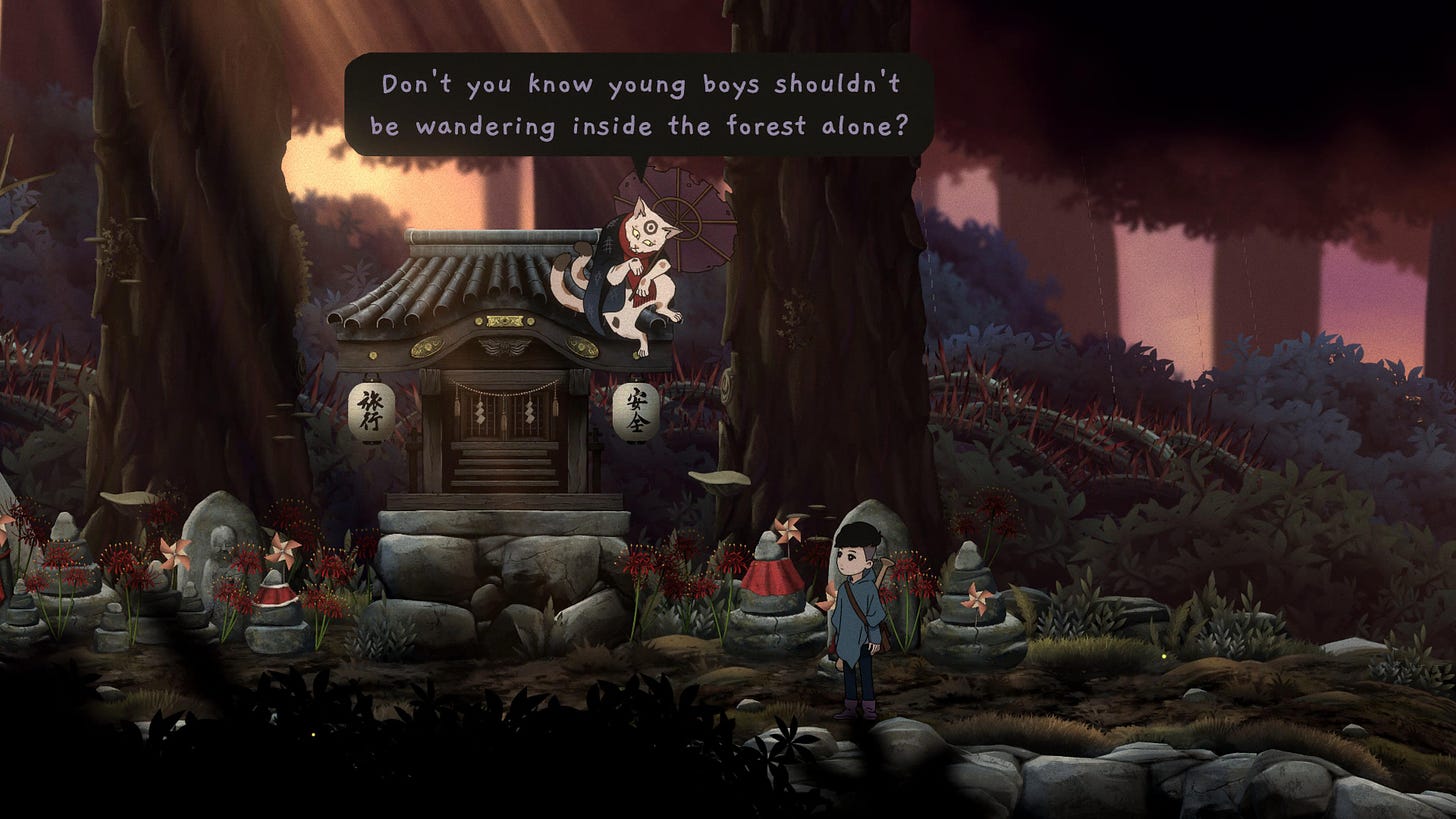
In a conversation with The Qun a couple of weeks before the game’s launch, creative director Juan Fandiño Martín had mentioned that his biggest inspiration for the game was Night in the Woods. “When I played it, I felt that those characters were kind of believable, even though they are animals, right? But their stories or their personalities, they kind of felt like real people to me,” he had said. And with Last Time I Saw You, Juan’s team appears to have nailed the brief with all the characters, human or otherwise, coming across and believable and relatable.
This is aided greatly by simple but engaging, coherent but magical, and sharp but playful writing. Sure, there’s the incredibly rare typo in this world of text-based conversation, but it’s easy to look past it when all the dialogue flows so naturally. That the writers chose to ensure that their fundamentals were strong and steer clear of purple prose also helps to ground the game within the context and perspective of its protagonist, a 12-year-old boy.
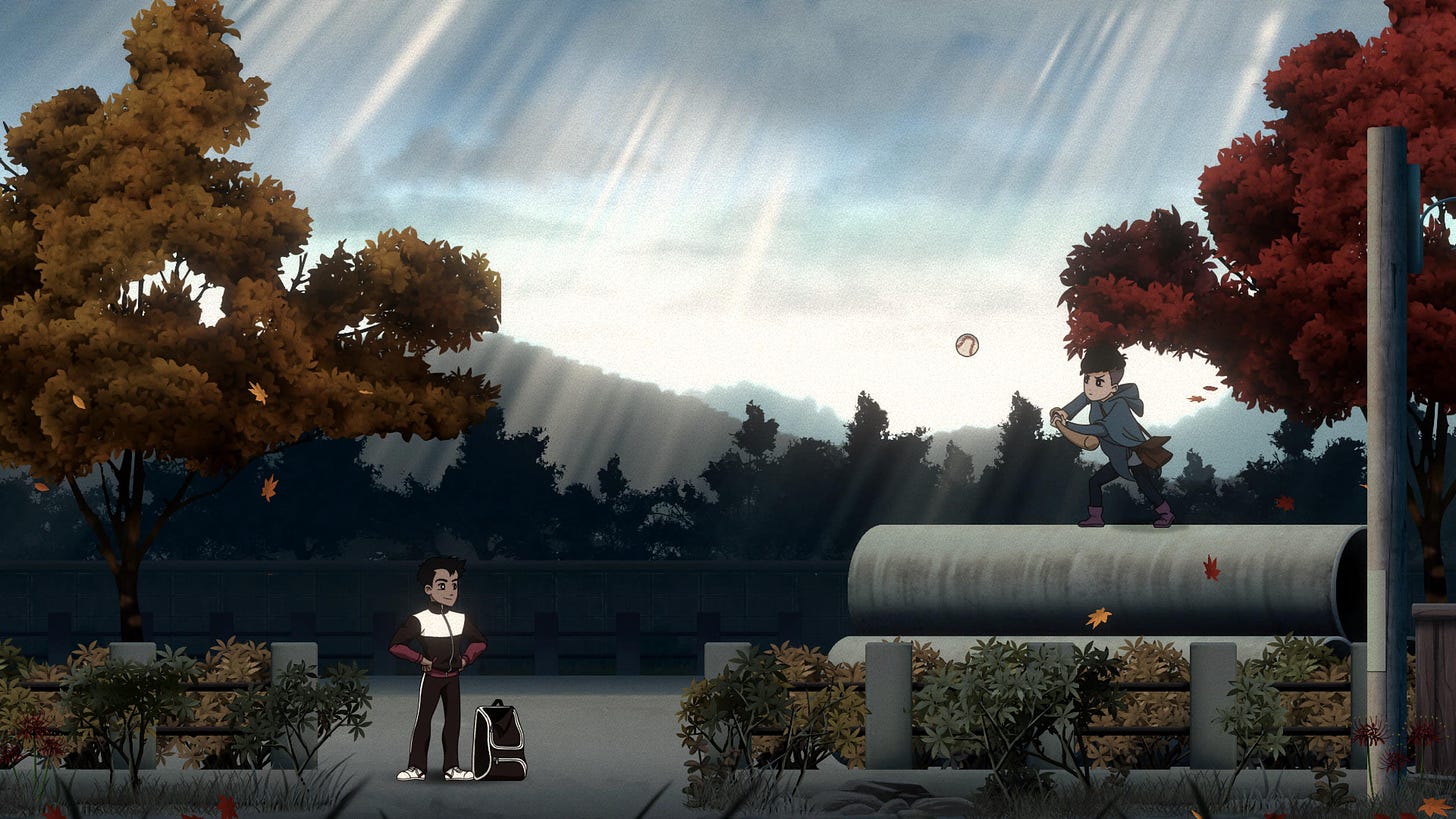
Another key point when ensuring that your basics are solid is gameplay. I’d noted in the demo that the swinging of the baseball bat was crisp and responsive, and even experienced the combat elements to which it lent itself. However, I came away slightly underwhelmed at how little gameplay I’d actually experienced. Was the entire experience just going to entail mild doses of combat surrounded by walls of walking up and down Amatsu interacting with townspeople?
But I needn’t have worried, because while the baseball bat is used for a handful of purposes through Last Time I Saw You, gameplay loops include basic exploration, mild puzzle-solving, and platforming — both of the gentle variety (which is enhanced later on by the addition of some special moves) and the significantly more frantic sort seen in 5 Dragons Legend, a platformer minigame on Ayumi’s home console. The inspiration for the latter, incidentally, came from Roach Race, the Witcher-themed arcade game found in Cyberpunk 2077. And in this game, 5 Dragons Legend serves the same purpose: To break up the flow and provide a distraction from the main narrative.
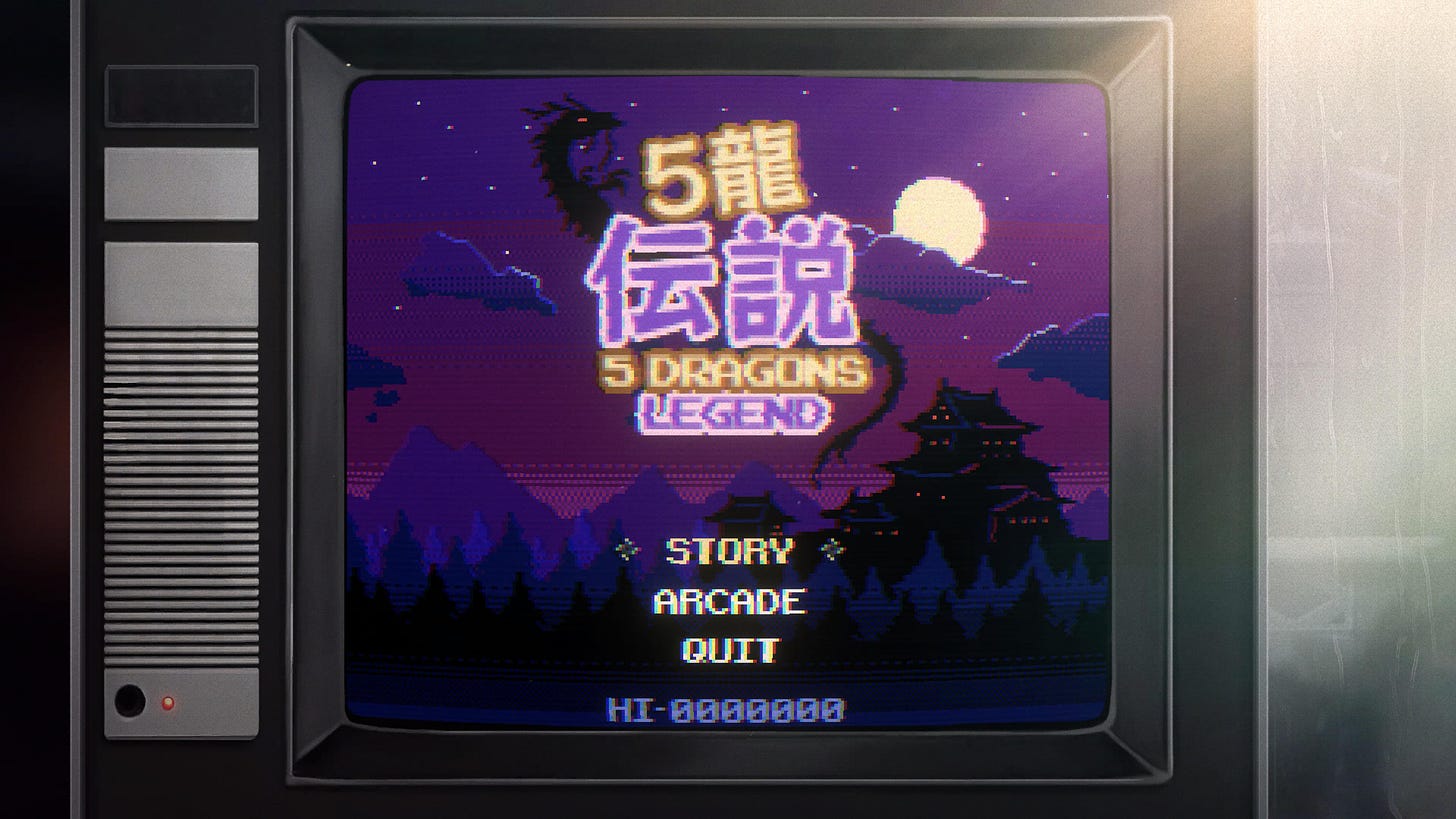
These gameplay loops come together to support the main story (that sees you spend a large amount of time in the mysterious forest), a bunch of side quests (largely explore-and-fetch quests) and 5 Dragons Legend. For the rest of the six-or-so-hour length of the game, you are reading conversations, and on the rare occasion, choosing how you want to respond. This is par for the course for a narrative-driven game, so I had no complaints.
Beauty in the dissonance
The story of Last Time I Saw You sees Ayumi unable to shake off a recurring dream: He runs into a girl a couple of years older than him, whose face he is never able to see. And over the course of 10 in-game days, he’ll go through a rollercoaster of emotions and revelations (not all of which are positive). If I had to be super-critical, I’d say that one particular side quest ended up being a tad schmaltzier than the game required. Especially when dealing with a conclusion that carried a considerable deal of emotional heft away, perhaps I would’ve exercised a lighter hand with that quest. Nevertheless, this was a mere blemish on the otherwise smooth fabric of storytelling.
Games of this nature frequently run into the neverending tussle between art and gameplay. Should it be more about giving players interesting things to do, or more about giving then interesting things to see and hear? The best of the lot tend to get the balance just right. And that isn’t necessarily 50:50. I was pleased to find that while that equilibrium is skewed far more in favour of art in Last Time I Saw You, the move pays off handsomely.
Whether it’s the reflection in the water, the interplay of light and dark spaces, the languid manner in which leaves painted in autumn colours descend from the sky and the character design, I felt like I was walking through a painting while a chamber ensemble or a small orchestra scored my journey. By keeping the writing, the action, and the characters solid without necessarily being dazzling by themselves, the developers gave the audiovisual design a chance to shine.
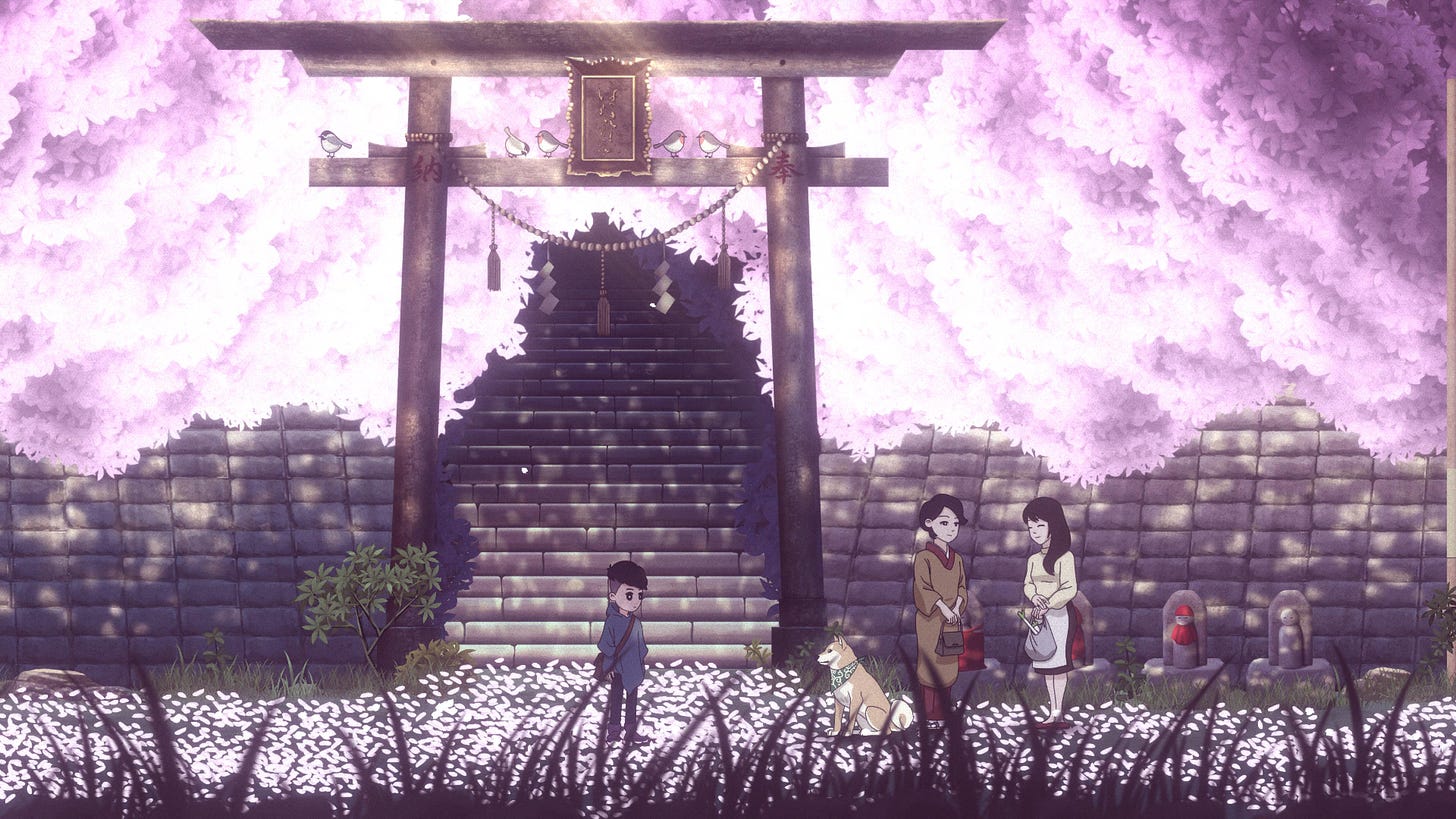
It’s the mark of a truly impressive game when environmental storytelling steps in ever so subtly to push the narrative along. This game is littered with tiny examples of this idea — examples that by themselves aren’t really definitive, but when looked at as a whole, drive your understanding of the story. Last Time I Saw You, with its combination of Studio Ghibli and Haruki Murakami (to my mind anyway) isn’t content with simply using its good looks to stand out, tell a story or look pretty. It wants it all! The manner in which the camera pans and zooms, the poignant use of film burn and of course, the gorgeous lighting speak of a wonderful combination of artistic endeavour and its effective use. I would go as far as to say I’m not sure the game would’ve had the same impact on me in the absence of the visuals and the subtle yet seemingly omnipresent musical score.
One last look
Lacking the complexity of such narrative-driven titles as Until Then or A Space for The Unbound, Last Time I Saw You is a case of a more straightforward narrative being driven by an artistic tour de force.
I’m not sure if there are any alternate endings — seems unlikely given the way it all shakes out in the end — and I’m not certain how much I could’ve done differently, but I thoroughly enjoyed my time in Amatsu and would be eager to return in some time, if only to 100% the game. Aside from my gripe about the mildly mawkish side quest, I would’ve enjoyed a slightly wider variety of mission types, a shade more agency in terms of feeling like I was influencing how things were going down and slightly less handholding. In terms of the latter, one example pertains to how I was all set to leave the house without seeing my parents (despite their instructions), but the game refused to let me do so. It’s a small thing, but I would’ve liked to have seen their reaction or the consequences of disobeying them.
Apart from that though, Maboroshi Artworks is onto something special with Last Time I Saw You, not least in terms of it portrays Juan’s own heartbreak as an engaging story peppered with memorable characters (the warring crows were my personal favourites) and delivers it as no less than a work of art. As you can probably tell, I highly recommend you go and check out this game at the earliest. And if you need a bonus reason, Last Time I Saw You offers up one of the most unique trophies I’ve won in all my time playing videogames.
Game reviewed on PlayStation 5. Review code provided by publisher





